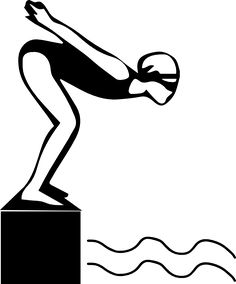The bodies of youth (ages 10-18) swimmers change dramatically during puberty. Historically, coaches have taken body fat measurements of teen swimmers regularly and encouraged them to eat carefully to manage their weight. This practice has created great angst among swimmers, causing them to skip meals, crash diet, and have doubts about looking “good enough” in skimpy swimsuits.
Young swimmers are in their prime growth phases and experience physical changes in height, arm span, body mass, and muscle mass. The onset and rate of these changes can vary widely, making it difficult to determine how changes in physique may affect swim performance. Therefore, it is essential to approach physique management in a thoughtful and supportive manner.
Here are some general guidelines from Swimming Australia’s downloadable booklet Performing in Lycra: Environment and Language Guide for Discussing and Managing Physique
1. Encourage swimmers to eat well, for both health and performance. Positive messages regarding health and well-being are particularly important for teen athletes, whose bodies are growing and developing, and are supposed to change!
2.Promote positive relationships with food and body image. Avoid making comments about weight, shape, or size, and instead, use language that focuses on health, well-being, and performance.
3. Create a supportive team culture that promotes positive body image. This can be achieved through educating coaches, swimmers, parents, support staff, and administrators. In addition, cultivate a team culture that prioritizes teamwork, respect, and mutual support.
4. Ensure proper guidelines are followed when measuring physique. To promote a respectful and safe environment, it’s important to obtain athletes’ permission to have their body fat measured and provide them with the option to opt-in rather than opt-out. Physique measurements should only be performed when there is a clear rationale regarding how it will improve performance. It should not be used alone for talent identification as this is damaging to the maturing athlete’s body confidence and is unrepresentative of their full athletic performance potential.
5.Identify the swimmer’s risk factors for disordered eating development before performing physique measurements. This can be achieved through reported self-awareness from the athlete, input from close connections such as parents or caregivers, or assessment by trained health or performance support professional.
6.Limit physique measures to height, arm span, proportionality, and mass. Body fat management is not recommended at this time in development. Suggestions for physique changes to enhance performance should be discussed supportively with the swimmer, coach, and other relevant stakeholders only for swimmers who have completed maturation.
7. Monitor maturation status regularly. If consented to, maturing swimmers should be measured about 3-4 times per year to identify expected growth changes that can lead to periods of movement instability, coordination loss, and injury vulnerability. By monitoring maturation status, we can support the long-term development of the swimmer and minimize the risk of detrimental outcomes.
A coach’s top priority is to help the team reach its full potential. And when it comes to maturing swimmers, the coach needs to remember that the youth swimmers are still growing and changing. Rather than focusing on weight management, the focus should be on protecting young athletes from disordered eating habits and under-fueling, which can negatively impact both their wellbeing and performance.
When a swimmer is struggling with slower times, it’s essential to shift their mindset away from weight loss and towards other factors that can enhance their performance, such as technique improvement, proper fueling for training and competition, and quality sleep. By emphasizing these factors and creating a culture that prioritizes teamwork, respect, and mutual support, we can help athletes develop positive relationships with food and body image while also supporting their long-term growth and development.
Remember, countless factors contribute to performance beyond weight. Coaches have the power to help athletes become powerful swimmers who are fueled for success. By prioritizing their overall health and well-being, developing swimmers can reach their full potential and achieve success both in and out of the pool!
Written by guest blogger Angela Smith, nutrition student at Simmons University and aspiring sports dietitian.

